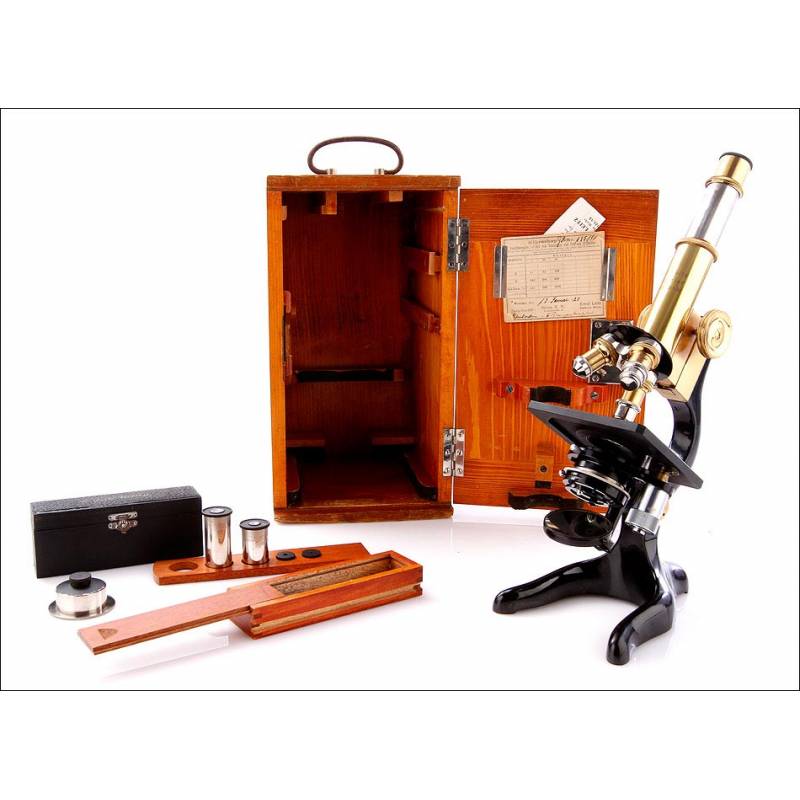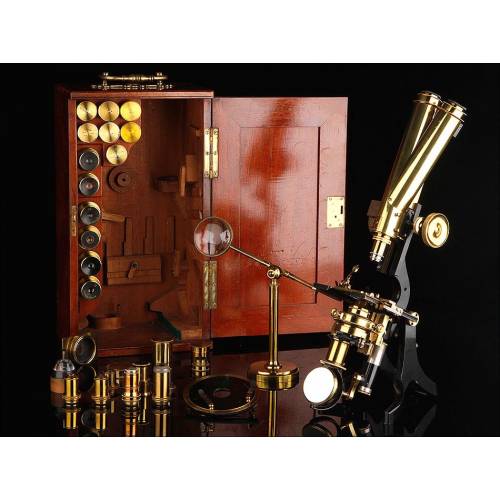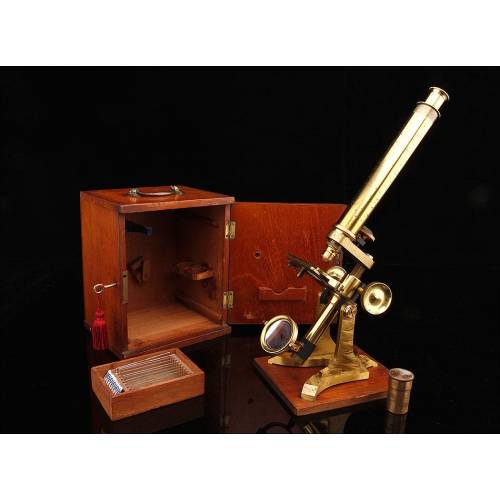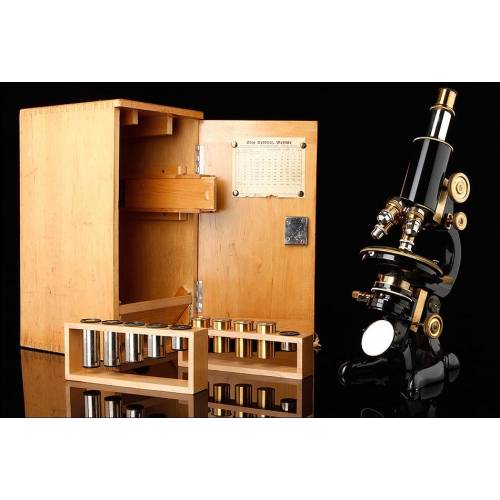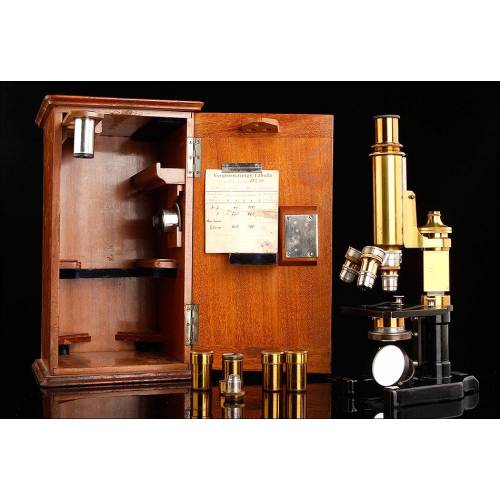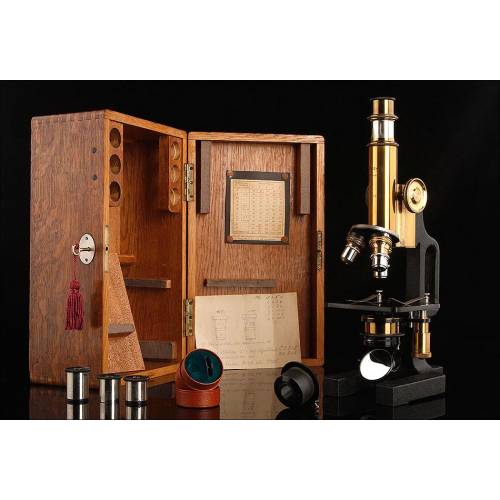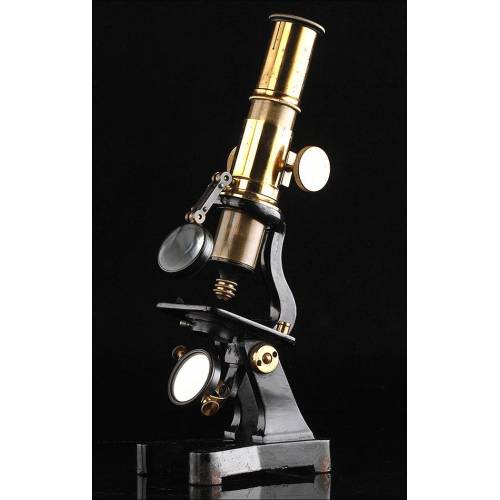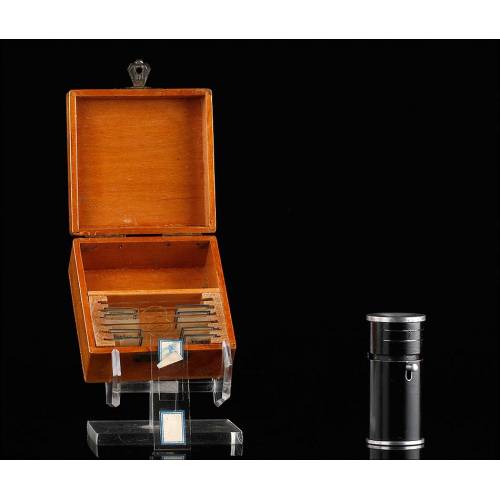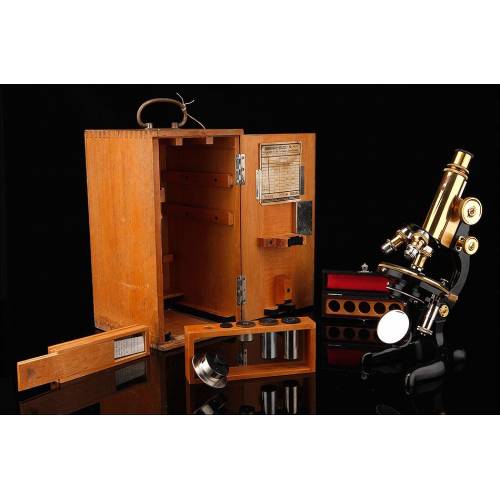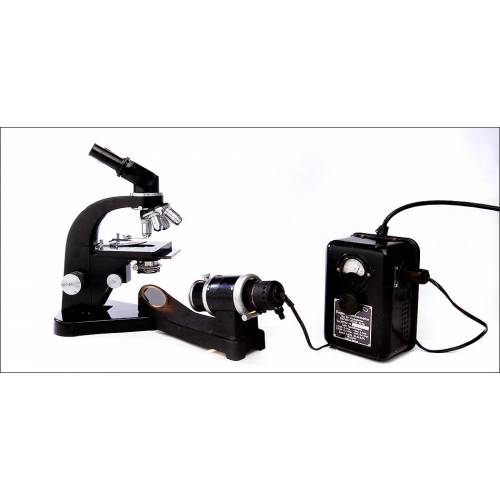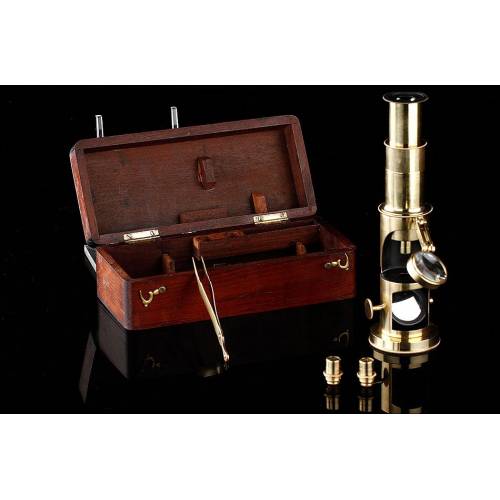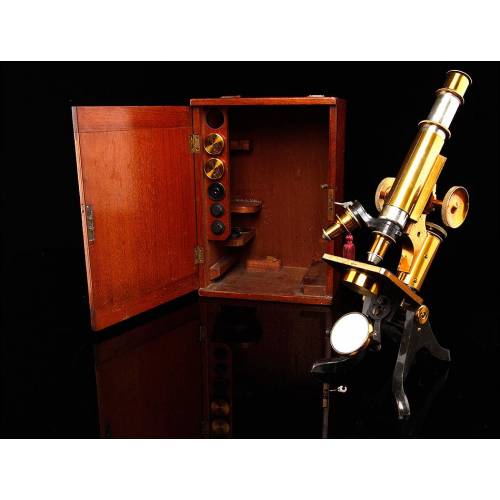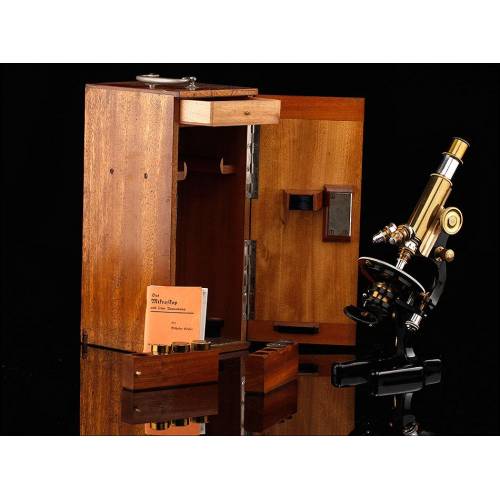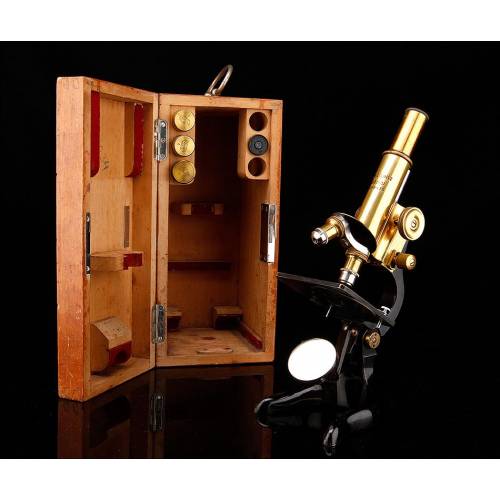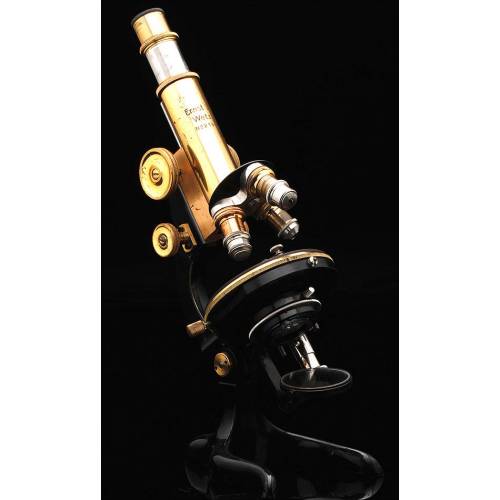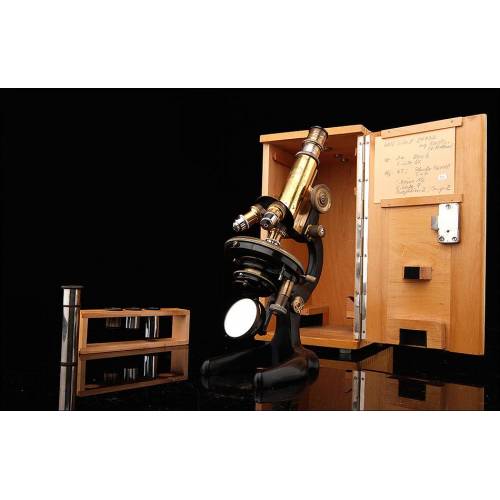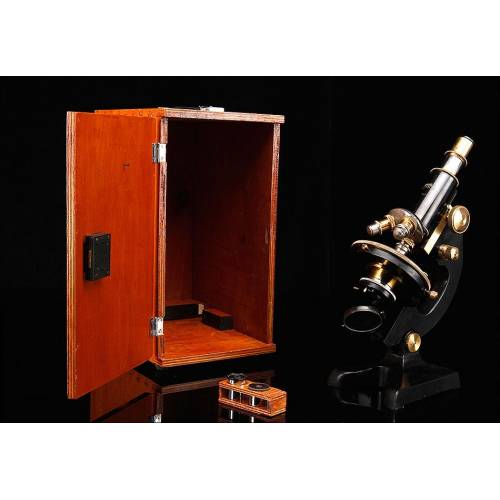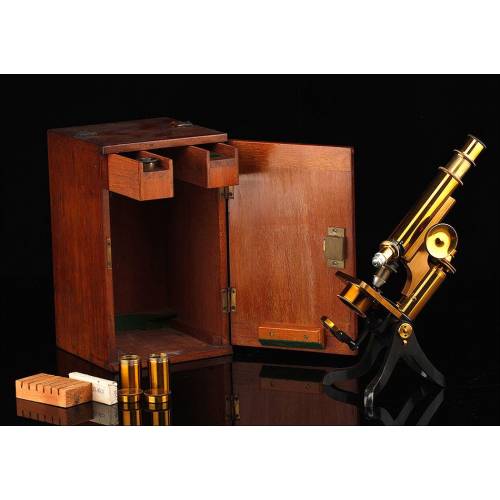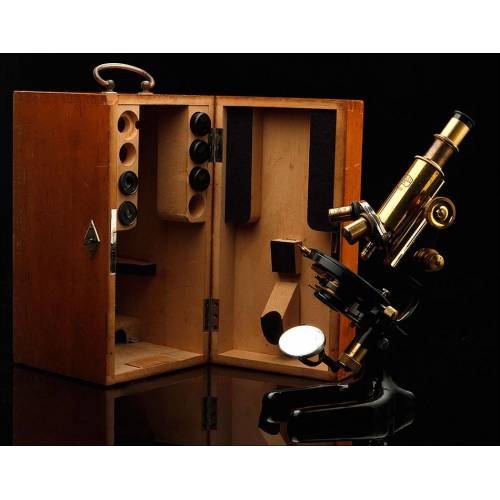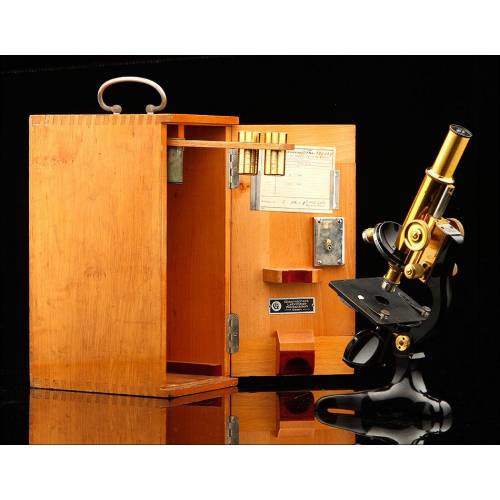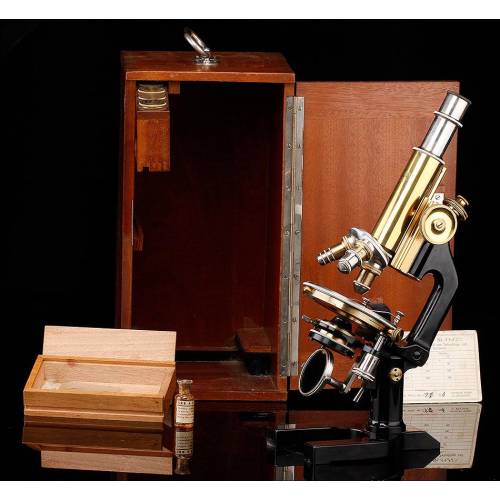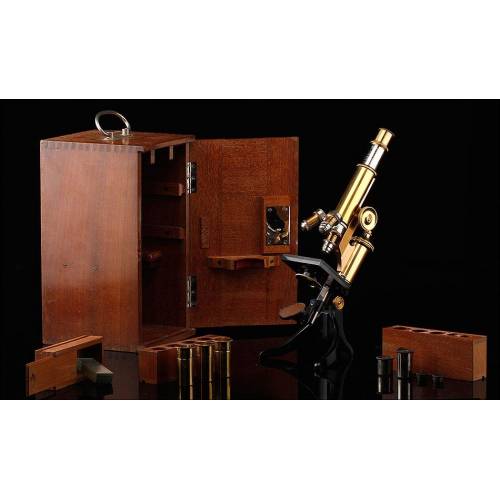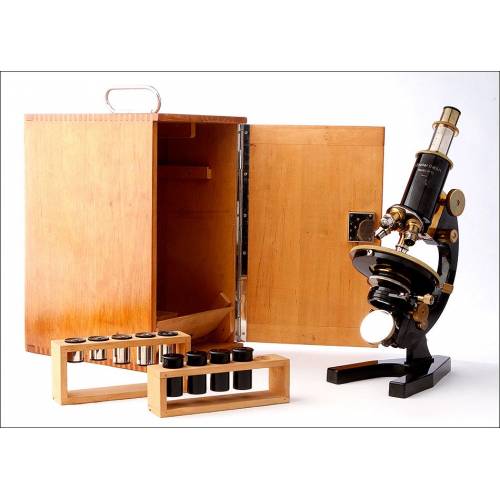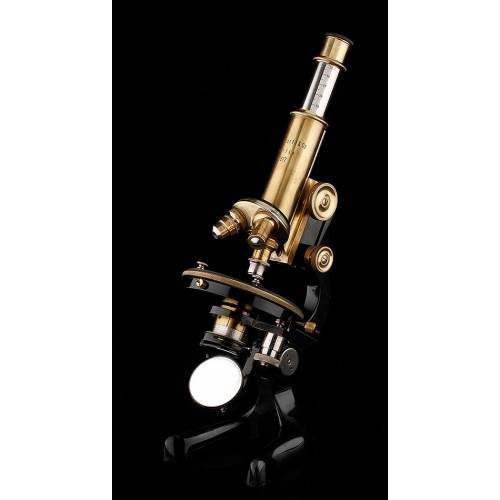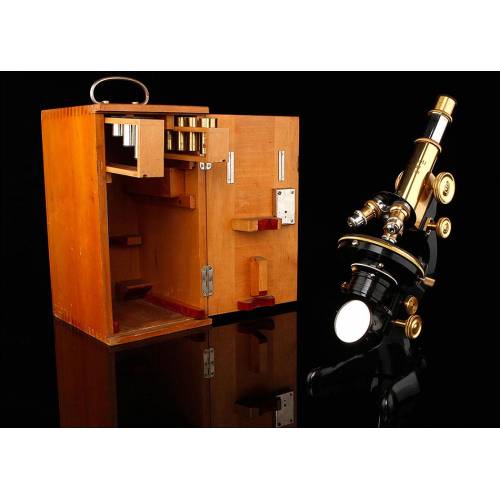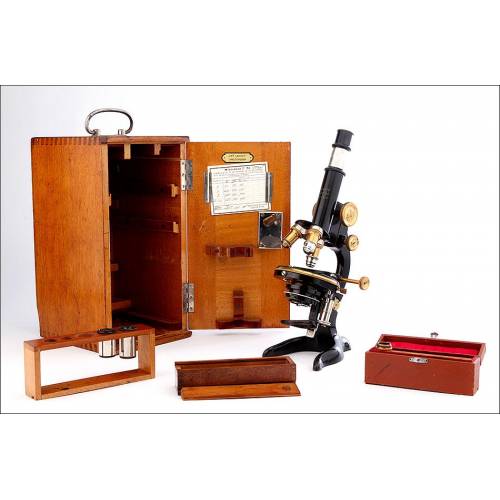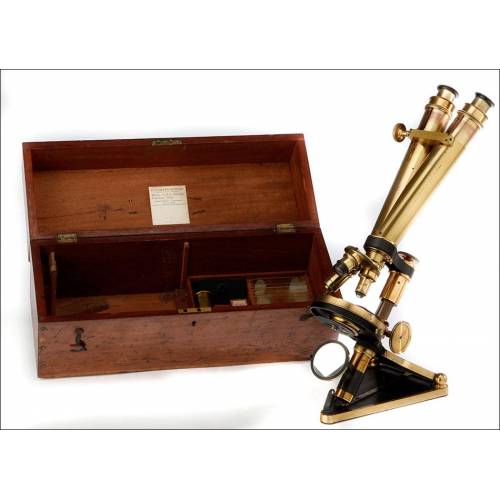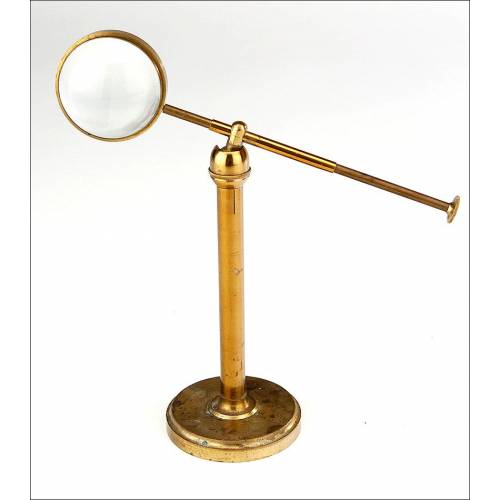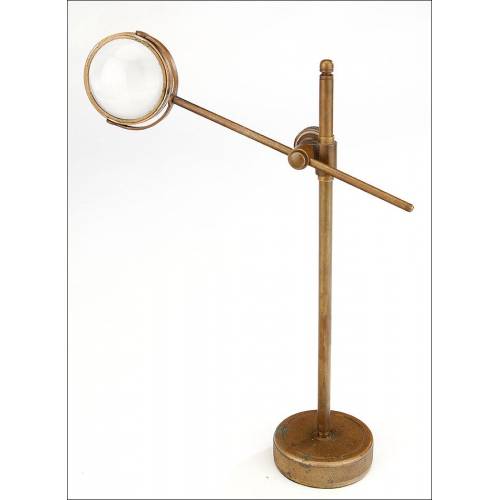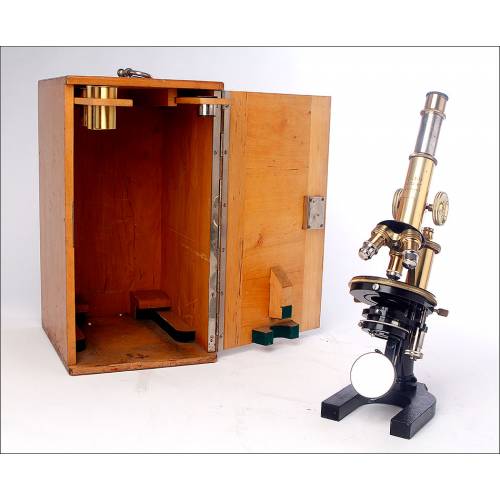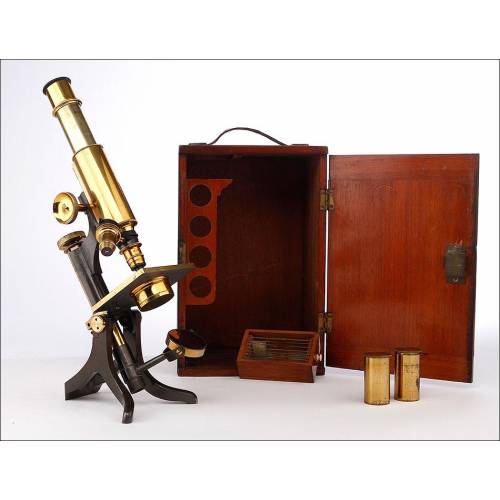C-140
Precious Antique E. Microscope. Leitz Wetzlar, Germany, 1920
Impeccable antique E. Leitz Wetzlar microscope. Leitz Wetzlar microscope with case and key. Includes set of lenses and eyepieces. A museum piece.
Sold!
Outstanding antique E. Leitz Wetzlar microscope with three-lens revolving nosepiece, original wooden case and complete accessory set. The microscope dates from 1920 and was made in Germany by the prestigious optic material manufacturer. It is in flawless condition and in perfect working order: it preserves all its original component parts and pieces which guarantee a great operation. The microscope mounts a horseshoe-shaped cast-iron foot with a bright black-lacquered finish in amazing condition too. The mobile component parts are made of brass and chrome-plated metal; the brass keeps the original transparent lacquered finish which provides it with a wonderful patina. The microscopes turret bears the engraved manufacturers name and serial number: E. Leitz Wetlzar - nº 185191. The lenses are also signed by the maker. The solid pinewood case where this wonderful instrument is stored is in very good condition too inside we can see a series of wooden supports to keep the accessories organized, such as the eyepieces and the box for the utensils. There is also a small black-leather-covered box with the manufacturers name printed in golden lettering; it is designed to store the lenses. The wooden case preserves the original lock and key in perfect working order. Extremely beautiful and in perfect condition, this antique E. Leitz Wetzlar microscope is a real collectors piece, precise and elegant. Measurements: Width: 7.8 in / 20 cm. Height: 13.7 in / 35 cm.Ernst Leitz Wetzlar History The beginnings of the famous optic material manufacturing company named Ernst Leitz Wetzlar can be found in the first half of the 19th century, when the mechanic and selft-taught mathematician Carl Kellner founded the Carl Kellner Optisches Institut in Wetlzar, Germany. After his early death his widow maintained the business, and in 1864 the mechanical engineer Ernst Leitz entered the company. Just five years later, Leitz took control of the firm and changed its name for Ernst Leitz Wetzlar. Leitz led the company to success after introducing improvements such as serial production, raising sales volume rapidly after 1871. Leitz microscopes included technical improvements that increased their quality; by the late 19th century the company already had a worldwide reputation. Ernst Leitz died in 1920 and the leadership of the firm passed to his son. As well as for their microscopes and optic material, Leitz became hugely famous for their famous Leica cameras (abbreviation of Leitz Camera).

